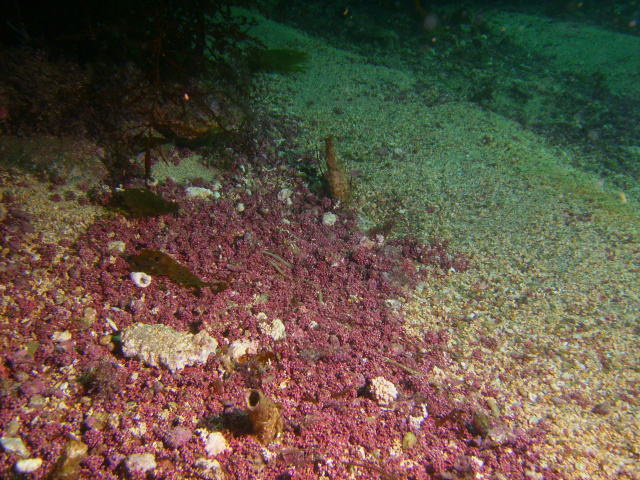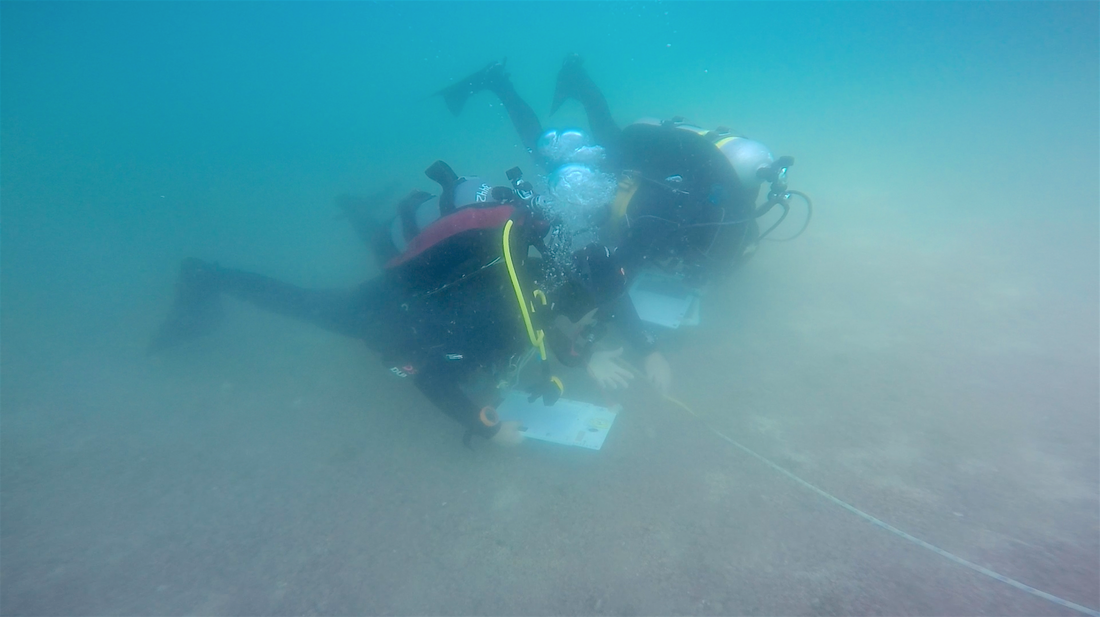By June Shrestha, Ichthyology Lab
I recently returned from a field expedition to assist PIs Dr. Diana Steller (MLML) and Dr. Matt Edwards (SDSU) research rhodolith beds on Catalina!
What are rhodoliths, you may ask?
Rhodoliths exist around the world, yet not much is known about them. They are a calcareous red alga that provides relief and habitat in otherwise sandy soft-bottom stretches of the nearshore coastal environment, supporting invert and fish communities.
They have been a hot topic in recent years due to implications of ocean acidification on their structure, as well as the fact that they exist in areas with lots of boat traffic and moorings. Interestingly, they are not usually included in habitat characterizations or taken into consideration during MPA designations (which maybe they should!).

Collaboration in Action
The recent research trip was truly a collaborative effort between multiple institutions. Our team was composed of great minds and divers from MLML, SDSU, and even Kunsan National University in South Korea. The research team also featured the one-and-only Scott Gabara, previous grad student at MLML, who is now continuing his research on rhodoliths at SDSU in the Edwards Lab for his PhD (check out his previous Drop-In post about rhodoliths here!)
Further Reading
SDSU Graduate Student, Pike Spector, recently wrote a couple of fantastic blog posts about our work from this trip. I encourage you to check them out for more great pictures and descriptions!


